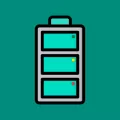Apps Home

Understanding Smartphone Addiction
Smartphone addiction, also known as "nomophobia," is a phenomenon that has gripped societies across the globe, underscoring a potent blend of technological advancement and human psychology. This dependency on mobile devices has increasingly been recognized as a behavioral addiction characterized by the inability to regulate usage. It often manifests through excessive smartphone use, leading to negative consequences in personal, professional, and social realms. The ubiquity of smartphones and the internet makes this issue especially pervasive. Our devices today are designed to be our constant companions, offering everything from communication tools to entertainment platforms, news sources, and even virtual assistants. For example, push notifications, which are baked into the functionality of many apps, play a significant role in keeping users perpetually engaged with their screens. The anticipation of these alerts alone can trigger dopamine release in the brain, reinforcing addictive behaviors. This issue is compounded by the fact that smartphones have become integrated into nearly every aspect of daily life, from morning alarms to digital planners, to navigation tools and calorie counters. The convenience they offer is unparalleled, but with convenience comes the potential for misuse. Theoretical frameworks from psychology, such as operant conditioning, highlight how variable rewards from app notifications can create patterns similar to gambling addictions. Moreover, the Fear of Missing Out (FOMO) exacerbates the problem by driving users to check their devices compulsively to stay updated. Recognizing smartphone addiction as a genuine condition is the first step towards managing it. This acknowledgment can foster greater societal understanding and support for those seeking to break free from their digital chains.
Impact on Mental and Physical Health
The ramifications of smartphone addiction extend beyond social interactions, encroaching significantly on both mental and physical health. Prolonged exposure to screens can lead to a myriad of health issues, some of which may not be immediately apparent. On the physical front, one of the most discussed concerns is digital eye strain, a condition resulting from staring at screens for extended periods. This condition can cause symptoms such as headaches, blurred vision, and even long-term vision problems. Furthermore, the 'text neck' phenomenon, caused by the hunched posture while using phones, can lead to chronic neck and back pain. On a psychological level, the incessant use of smartphones has been linked to increased anxiety, depression, and stress. Studies have shown that the overuse of mobile devices can exacerbate symptoms of these conditions, partly due to the constant exposure to negative news or comparison with others on social media platforms. Additionally, sleep disturbances are a significant concern; the blue light emitted by smartphones can interfere with the natural production of melatonin, the sleep hormone, leading to insomnia and poor sleep quality. This creates a vicious cycle where the lack of sleep heightens stress and decreases the ability to cope with daily challenges. Moreover, the constant connectivity can lead to a state of hyper-vigilance, where individuals feel compelled to stay alert to respond to messages or calls instantly, further escalating feelings of anxiety. Recognizing these health impacts can motivate behavioral changes and underscore the importance of setting boundaries with technology to promote a healthier lifestyle. Engaging in regular digital detoxes or using apps designed to manage screen time can be crucial interventions in mitigating these health risks.
Developing Healthy Smartphone Usage Habits
Addressing smartphone addiction involves cultivating healthier usage patterns, which can be achieved through strategic interventions and conscious behavior modification. One effective approach is the implementation of a structured tech boundary plan. This technique involves setting specific time slots throughout the day when smartphone use is permissible, ensuring sustained periods of offline engagement. For instance, dedicating the first waking hour as a phone-free zone can significantly enhance morning productivity and mental clarity. Another practical measure involves turning off non-essential notifications. Many find themselves enslaved to their devices, repeatedly checking for updates that may not require immediate attention. By disabling alerts for less critical applications, users can regain control over their attention and reduce unnecessary distractions. Additionally, designating specific apps for dedicated sessions and setting timers can help manage time spent on potentially engaging platforms like social media. Beyond external control measures, internal awareness is vital. Mindfulness techniques encourage users to reflect on their smartphone habits, promoting recognition of trigger points that lead to compulsive use. Engaging with applications that prompt digital detoxes, like setting focused time or blocking particular apps during work hours, can prove invaluable. Such applications not only disrupt the automatic impulse to grab the phone but also instill a sense of achievement when users successfully complete detox sessions. Furthermore, replacing screen time with alternative activities can foster healthier habits. Engaging in physical exercise, pursuing hobbies, or spending quality time with loved ones can provide fulfilling substitutes for excessive smartphone interaction. Ultimately, developing healthy smartphone habits is about balance, ensuring that technology serves us rather than the other way around. Acknowledging the compulsion, consciously deciding when to utilize technology, and implementing strategies to disconnect can facilitate a harmonious relationship with modern devices.
Using Technology to Combat Technology
In a world where technology often seems to be a source of addiction, it can also offer solutions for managing excessive screen time and fostering healthier smartphone usage. The key lies in leveraging applications and tools designed to enhance self-discipline and break addictive patterns. One such example is the Detox Procrastination Blocker app, a tool specifically created to help users manage phone addiction by allowing them to set timers for off-screen periods. The application's functionality centers around creating dedicated spaces of disconnection, thereby encouraging users to remain focused on the task at hand, free from digital distractions. This app works on the principle of commitment, where once a timer session is initiated, users are discouraged from breaking it, ultimately aiding in the cultivation of self-control. By regularly using such applications, individuals can gradually algorithmize their technology usage patterns, fostering healthier habits over time. Another vital technological advancement aiding in combating phone addiction is the screen time monitoring feature available on most modern smartphones. This feature provides comprehensive insights into daily usage statistics, allowing users to identify their most consuming activities and adjust accordingly. For example, if social media apps dominate, users can implement stricter limits on their access. In addition, there are virtual reality programs and games designed to replace addictive habits with engaging, yet productive digital experiences. These platforms not only distract but promise cognitive and reflexive benefits, transforming once harmful habits into enriching activities. Today, the same technology that perpetuates addiction can play a pivotal role in its mitigation by empowering individuals to take charge of their digital lives, turn the tide on addiction, and re-establish a healthier technology balance.
Embracing a Balanced Digital Lifestyle
The journey towards overcoming smartphone addiction and achieving a balanced digital lifestyle involves more than just restricting screen time; it's about creating a harmonious blend between the digital and real worlds. Adopting a balanced approach is crucial for maintaining well-being in an increasingly connected society. This begins with shifting one's perspective on technology from a habitual compulsion to a pragmatic tool that augments life. By understanding the true value of immediate, authentic interactions over virtual ones, users can appreciate the moments when digital communication is beneficial and when it's best to unplug. Incorporating mindful practices, such as setting device-free times during social engagements, meals, or bedtime, allows for genuine interpersonal connections and reflection, fostering healthier social habits. Acknowledging the importance of downtime and the benefits of boredom as a precursor to creativity can also empower individuals to resist the constant impulse for digital engagement. Establishing digital wellness that aligns technology use with personal goals encourages a purposeful connectivity, where users selectively determine the role of technology in fulfilling their aspirations and enhancing life's quality. In education and work environments, promoting digital wellbeing can result in more focused and efficient outputs. This involves using digital tools that streamline processes without reducing productivity to tethered, constant connectivity. Conclusively, by embracing a balanced lifestyle, individuals not only reduce the negative impacts of technology but also augment their quality of life, ensuring that digital tools are used wisely and thoughtfully. In this light, applications like Detox Procrastination Blocker become indispensable allies in a modern journey towards conscientious digital citizenship. Efforts to forge this balanced digital experience are not just about technologically unplugging, but truly connecting with the world around us.
Share Your Opinion
Your Email Will Not Be Published.
All Rights Reserved © Apps Home 2025






























A Google user
Great app. Definitely has helped me be more productive, and all the premium features together is really cheap for what it gets me. There are a few ...
vaishali kapgate
so much helpful in studies, it prevents distracting form various app, to which we are addicted. its also good for long run as it build a significan...
Attiqa Mehtab
A Game-Changer for Focus!" If you struggle with distractions while studying, this tool is a must-have! It helps you stay on track with features tha...
Aanchal Dubey
Every student should download this app..good for reducing distraction... finally I got my solution to stop procrastination and using phone during s...
Wendel Kos
YES, ITS A SIMPLE,WORKING BLOCKER. THAT. JUST. WORKS!!! Ive been using this little app for over a couple of years. In the heat of the moment, you o...